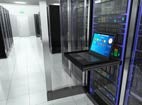If modular is the next phase of data center design, it seems that prefab is the next phase of modular.
Prefabricated, or preassembled, infrastructure has already gained a loyal following among top designers and architects, which is strange considering the industry as a whole is only just beginning to see the advantages of the commodity-based, modular approach.
The prefab movement will undoubtedly move hand-in-hand with the trend toward software-defined data environments that is expected to unfold over the next decade. As long as the actual data architecture can be configured completely in software, customization of the underlying hardware becomes less of a critical factor. Indeed, it you look at some of the more futuristic data center designs on the table these days, a number of them incorporate modular or prefab infrastructure to some degree.
According to Schneider Electric, prefab is not only cheaper and provides a much better ROI compared to traditional infrastructure, but can be deployed and put into full operation in less than half the time. This should emerge as a key consideration for organizations looking to establish their own cloud and software-defined infrastructure. After all, it is much easier to implement entirely new architectures on greenfield deployments than in legacy infrastructure, so the quicker it is to put new hardware in place, the quicker the enterprise can embrace the dynamic data ecosystem.
And the advantages are only magnified for hyperscale deployments. Facebook, for example, is in the process of codifying its Rapid Deployment Data Center (RDDC) model, which features standardized prefab modules that can literally be snapped into place like so many Lego© blocks. The program features various chassis and “flat-pack” designs that can be trucked into virtually any site and assembled with relatively little impact on surrounding areas. In this way, you get a standardized hardware build – complete with processing, storage, networking, power and cooling – that can be managed and maintained under a uniform framework and duplicated wherever the need exists.
The prefab market is also drawing a number of new entrants, a testament to its anticipated profitability. Telecom systems developer CommScope is one of the latest, having just released its Data Center on Demand platform that matches customer-selected rack configurations with free cooling systems and the iTracs Data Center Infrastructure Management (DCIM) software. Modules are offered in 1-, 4-, 10- and 20-rack configurations, allowing clients to scale the infrastructure at varying paces.
Indeed, the speed and flexibility of prefab is just as much a selling point as the cost. As I mentioned, enterprises are desperate to shift loads to private and hybrid clouds, and the fact is that many legacy environments do not lend themselves to highly dynamic resource pooling and other facets of the software-defined revolution. That means new infrastructure will have to be found somewhere, and unless the enterprise is ready to embrace the public cloud in a big way, that infrastructure will have to be home grown.
That means commodity hardware, open standards and broad replication across the entire data infrastructure. Modular puts those abilities within reach. Prefab modular kicks the deployment cycle into high gear.



